Our partnership with WARF:
Infinitesimal images, massive rewards
A decade ago, faculty at UW–Madison recognized that a transformational technology was being born:
Cryo-electron microscopy, or cryo-EM for short. Cryo-EM is a revolutionary imaging technology that, combined with specialized and high-volume computation, allows biologists to see the structure of molecules within cells. The technology now allows scientists to peer into the very surfaces where drugs and proteins interact, or where viruses orchestrate their cellular attacks. Simply, cryo-EM could transform the development and delivery of precision medicine.

Brad Schwartz
This technology set the stage for a decade-long venture at UW–Madison. The Department of Biochemistry took the lead and the Morgridge Institute joined with significant financial and organizational support. This attracted collaborators in the School of Medicine and Public Health, the Office of the Vice Chancellor for Research and Graduate Education, and several other campus units. Now, the fruits of this collaboration will arrive in summer 2020 with the grand opening of the UW–Madison Cryo-EM Research Center in the Biochemistry Building.
Cryo-EM is a fitting theme for our 2019 annual report. You’ll find a detailed account of the milestones chronicled by Morgridge Virology Investigator Paul Ahlquist, a key catalyst from the beginning. You’ll also learn how the Morgridge investment in cryo-EM goes well beyond financial support to include an invigorating yearlong seminar series and building a computational framework for scientists.
We also recognize that cryo-EM will be essential to the future of Morgridge research.
It’s currently the driving force in Paul’s work to visualize — for the first time — the molecular structures viruses build to hijack specific functions of host cells. It will also be critical to Metabolism Investigator Dave Pagliarini’s need to define various protein functions within mitochondria, including elements that contribute to dysfunction and disease.
In regenerative biology, virtually all actions needed for a cell to move from an undifferentiated to a defined state are happening at the molecular level, so this will expand our understanding of stem cells. And the central theme of our medical engineers is multi-scale imaging, looking at things all the way down to molecules and atoms, and integrating this information to improve healthcare.
It might be tempting to think cryo-EM is a final frontier in biological imaging, but it is only the beginning. Our newest investigator, Tim Grant, is dedicated to dramatically improving the resolution and functionality of this still-fuzzy universe.
In science, of course, there is always the next frontier. And the best scientists should always be poised to explore it.
Brad Schwartz
CEO, Morgridge Institute for Research
Numbers of Note
170
Morgridge Employees
(faculty, staff, students)
92
UW–Madison partners engaged in Morgridge research
64
Active research projects in 2019
65%
Active Morgridge grants that support UW co-investigators
58,000+
Average annual participants in Discovery Outreach programs
15
Principal Investigators
- 2 Howard Hughes Medical Institute investigators
- 2 Members of National Academy of Sciences
- 3 NSF CAREER Award winners
- 1 NIH Presidential Early Career Award winner
2019 Milestones
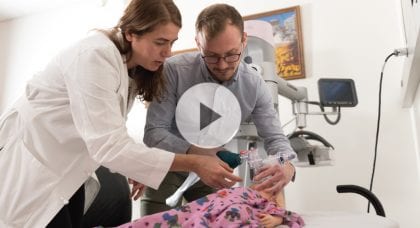
Protecting the most vulnerable patients during anesthesia
Pediatric anesthesia is a stressful and critical procedure. A project with the Morgridge Fab Lab aims to create a new medical device that alerts clinicians to compromised airways.

Developing tools to better understand, predict preterm birth
Preterm birth is a global health problem without a solution. New research aims to develop non-invasive, safe imaging tools to better identify the risk of preterm birth.
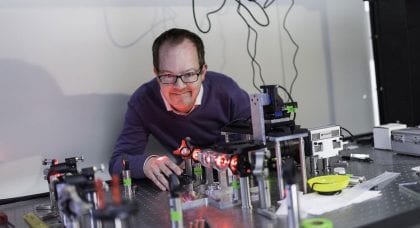
An order of microscopy, to go
Our portable, shareable microscope, called Flamingo, offers a chance for biologists who have a crazy idea to reach out to us do some great research — and for us to build a custom instrument to solve unique questions in biology.
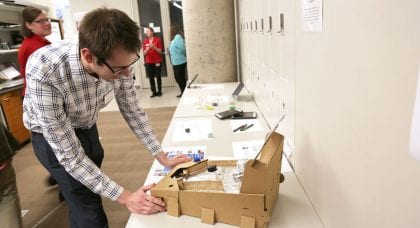
Inspiring children with biomedical research
Anthony Gitter faced a challenge: How could he translate his work into something children could understand and maybe even enjoy? The answer to that question: ‘protein pinball.’

Progress in the quest for bioengineered transplant arteries
Morgridge scientists are working toward a dream of using stem cells to create artery banks with readily-available material to replace diseased arteries during surgery. Their recent work highlights a better way to grow smooth muscle cells. “We decided to focus on blood vessels because cardiovascular disease is a major cause of death worldwide,” says investigator James Thomson. “And this work also has implications beyond making vessels for transplantation; it’s sort of a stepping stone to more advanced tissue engineering.”
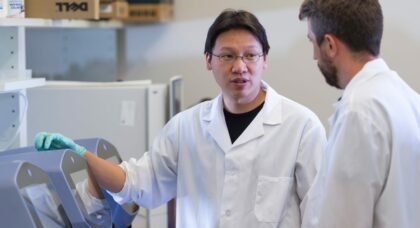
Human developmental clock mimicked in a dish
A Morgridge regenerative biology team has created a first-ever human model for developmental timing: A “clock in a dish.” The team programmed human stem cells into a very early state, then, using CRISPR technology, they edited a specific gene known to be connected to timing so it would illuminate when expressed. The result: The cells growing in a dish produced a burst of color every five hours, precisely when those faithful oscillating genes repeat their instructions.
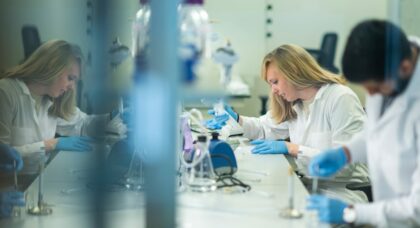
Metabolism’s role in the immune system
The immune system is one of the body’s most important defenders. With the growth of immunotherapies to treat diseases, particularly in cancer treatments, scientists need to better understand this complex system. A team led by Morgridge investigator Jing Fan demonstrated how changes in metabolism can regulate the different functional states in macrophages — key cells in the immune system — over the course of an immune response.
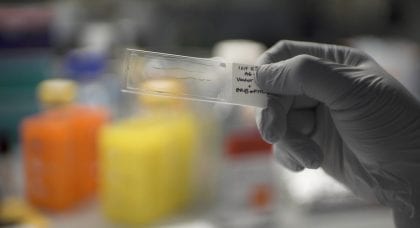
How tapeworms get ‘ahead’ in life
Tapeworms are famous for the enormous lengths they reach. Morgridge scientist Tania Rozario found an essential clue to this process: The stem cells that make regeneration possible were in close proximity to the worm’s head. This insight helps explain how tapeworms grow in their human and animal hosts, and could be helpful in finding new ways to target the parasites.
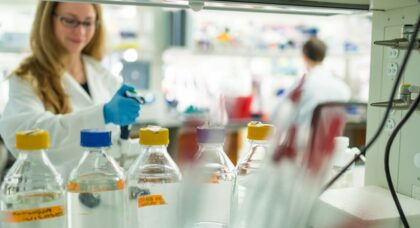
A better understanding of lipids and health
Oil and water don’t mix. However, for our largely water-filled cells to thrive, nature needs to devise clever ways to make and move around the lipids — fat and oil-like compounds — that comprise membranes and other cellular parts. One such lipid, coenzyme Q(CoQ), is essential for energy-producing pathways in mitochondria. Scientists in the Pagliarini Lab combined structural, biochemical and computational approaches to study COQ9, a protein vital to the production of CoQ.
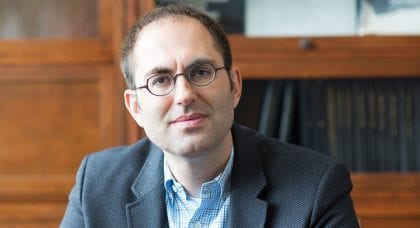
Can ‘smart toilets’ be the next health data wellspring?
Wearable, smart technologies are transforming health, but the humble toilet may have potential to outperform them all. That’s the conclusion of a team led by Morgridge affiliate Josh Coon. His team is working to put the tremendous range of metabolic health information contained in urine to work for personalized medicine. The team completed a study that measured the metabolic signatures of urine samples using gas chromatography and mass spectrometry, and found striking results that correlate with daily life patterns, such as exercise, sleep, diet and alcohol consumption.
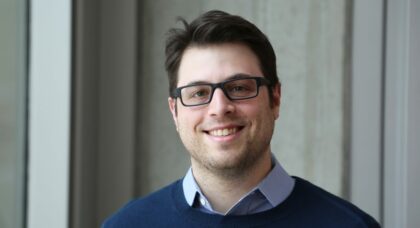
Peering into a more human petri dish
Cell culture media, the cocktail of chemicals and nutrients that keep cells alive in a dish, have been an essential tool of biology for more than 70 years. Remarkably, the composition of these potions hasn’t changed much. But Morgridge investigator Jason Cantor wants to make cell culture media more human. He’s one of the national leaders in the rise of “physiologic media,” and has perfected a media that painstakingly recreates many characteristics of adult human plasma.

A new way to fight schistosomiasis
A team led by Morgridge investigator Phillip Newmark isolated a natural chemical that acts as a potent kryptonite against schistosomes, the parasitic worms that burrow through human skin and cause devastating health problems. The chemical, which paralyzes the schistosome, is produced by tiny organisms called rotifers. The discovery could lead to new ways to fight the neglected tropical disease schistosomiasis, which affects more than 240 million people in Africa, Asia and parts of South America.
